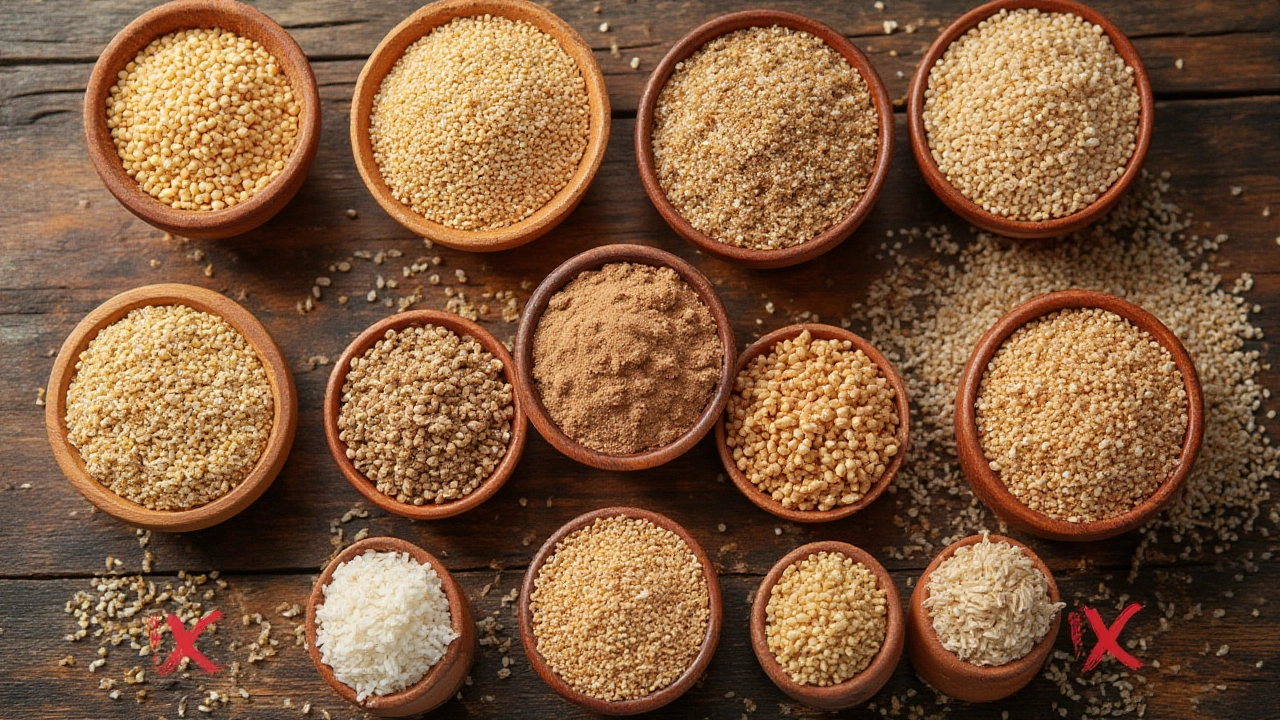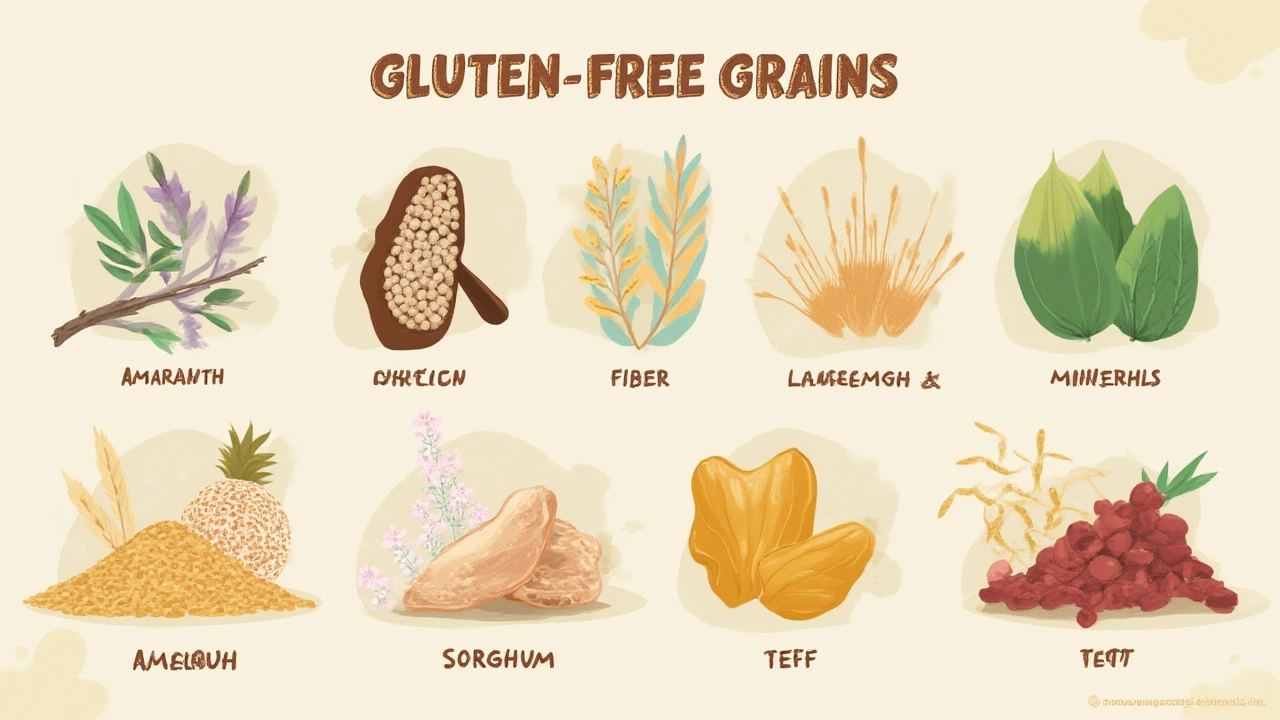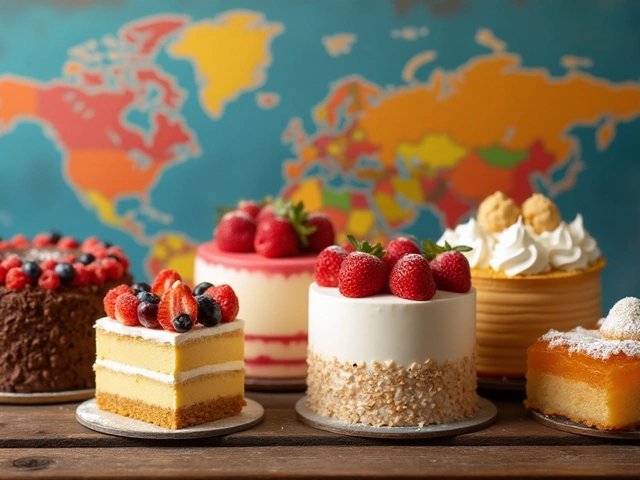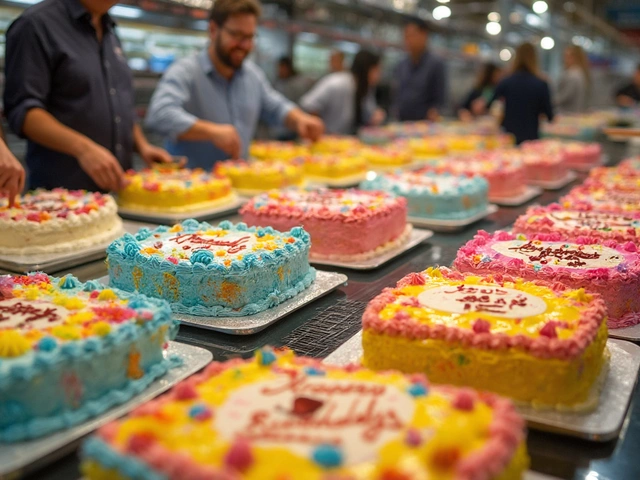
Did you know rye bread isn't the only thing off-limits when you go gluten-free? It's wild how much gluten sneaks into the foods we eat, even the basics that seem harmless. Whether you’re newly diagnosed with celiac or just trying out the gluten-free trend, picking out the right grains is a puzzle. Suddenly, the grocery store turns into a minefield, labels whispering hidden dangers. Were you ever shocked to learn buckwheat isn’t wheat? Or that oats—seemingly innocent—can betray you with a sprinkle of cross-contamination? Buckle up. We’re unpacking the maze of gluten-free grains, and there are some surprises ahead.
What Is Gluten, And Where Does It Hide?
Let’s clear something up: gluten isn’t a sneaky chemical dreamed up by food manufacturers. It’s a naturally occurring protein found in wheat, barley, and rye. Gluten acts as the glue that gives bread elasticity and a satisfying chew. But this stretchy protein is a nightmare for people with celiac disease, wheat allergies, or non-celiac gluten sensitivity. Even the tiniest breadcrumb can set off gut chaos.
But gluten is a master of disguises. Sure, obvious foods like bagels and cookies are usually loaded with it, but did you know soy sauce, soups, salad dressings, and even licorice can contain hidden gluten? Labels like "modified food starch,” “malt flavoring,” and “hydrolyzed vegetable protein" are codes for “possible gluten inside.” That’s why knowing exactly which grains are gluten-free is your body’s first line of defense.
Here’s the kicker: some grains that sound wheat-ish are gluten-free, while others with innocent names pack gluten bombs. Seriously, why is “buckwheat” not wheat? Turns out, buckwheat isn’t even related to wheat—it’s a seed from a rhubarb relative. Meanwhile, grains like triticale or spelt are just old-school cousins of wheat. It all comes down to what family the grain belongs to. Gluten-containing grains stem from the Triticeae tribe—think wheat (including farro, spelt, durum, semolina, khorasan/Kamut), rye, and barley. Everything else? Potentially safe, but there are some caveats.
The Ultimate List Of Gluten-Free Grains
Ready for some good news? You have way more options than sad rice cakes. Here’s a breakdown of grains and grain-like seeds that are naturally gluten-free. Memory hack: when in doubt, avoid the big three (wheat, barley, rye) and learn these golden alternatives.
- Rice: Brown, white, wild, jasmine, basmati—all rice is gluten-free by nature. Watch out for seasoned packages; additives can sneak gluten in.
- Quinoa: A protein-packed seed, not a grain. It’s perfect for bowls, salads, and even gluten-free bread.
- Millet: Tiny and mild, millet is great for porridge, pilaf, or as a base for energy bars.
- Amaranth: Nutty, slightly peppery, and excellent for porridge or thickening soups.
- Buckwheat: Totally gluten-free, despite its name. Use for traditional pancakes, noodles, and hearty salads.
- Sorghum: Acts almost like wheat in baking and makes a fabulous gluten-free flour blend.
- Teff: Earthy, dark, and the secret ingredient behind Ethiopian injera bread.
- Oats: Naturally gluten-free, but almost always contaminated with wheat during growing or processing. ALWAYS pick oats labeled “certified gluten-free.”
- Corn (maize): Yes, cornmeal, polenta, grits, and popcorn are all gluten-free! Just check for cross-contamination in packaged mixes.
- Fonio: An ancient West African grain, light and fluffy when cooked.
- Job’s Tears (Adlay): A pearl-shaped grain used in Asian porridge, naturally gluten-free but uncommon in Western diets.
Here’s where it gets tricky—just because a grain is naturally gluten-free doesn’t mean every box on the shelf is safe. Processing equipment is a busy place. Many companies use the same lines to make wheat, barley, and rye products. Look out for dedicated “certified gluten-free” labels if you’re celiac or severely sensitive.
If you spot freaky-new grains like kaniwa, freekeh, or triticale: steer clear. Freekeh and triticale are forms of wheat! Kaniwa is related to quinoa and safe, but it’s rare in the supermarket. For anything new, check first—companies sometimes use sneaky blends.
Grain Impostors: Know Which Ones Trick You
Taking a quick glance at a package isn’t always enough. Here’s how the most confusing grains and pseudo-grains stack up:
- Buckwheat and quinoa? Both are safe!
- Kamut and farro? Both are wheat—so, gluten bombs.
- Barley? Definite gluten (and malt derived from barley is, too).
- Bulgur? Another wheat product, no-go for gluten avoiders.
- Spelt and emmer? Ancient, yes. Gluten-free, no—these are wheat family, just with old-school names.
- Semolina and durum? Super gluten-loaded, classic in pasta and couscous.
- Oats? Only if labeled “Certified Gluten-Free.”
There’s a sneaky reason for all this overlap: food companies love experimenting with heritage grains because they look appealing on packaging. Saying "ancient grains blend" sounds healthy, but unless you read the ingredients one-by-one, you’re gambling with your gut.
And then you’ve got “wheat-free” vs. “gluten-free.” Big difference! Wheat-free means the product might not contain wheat, but it can absolutely have rye or barley. Only products with a certified gluten-free label are reliably safe for celiacs or anyone avoiding gluten for health reasons.

Gluten-Free Grains In The Kitchen
Let’s talk practical matters: how can you actually use these grains? Most people rotate through rice, but gluten-free doesn’t have to mean boring. Here are kitchen-tested ideas to mix things up:
- Millet makes a fluffy base for grain bowls, like a lighter quinoa.
- Try amaranth as a breakfast porridge with cinnamon and berries.
- Brown sorghum flour gives texture and sweetness to gluten-free pancakes. Try blending it with almond or oat flour for an easy swap.
- Popcorn is a naturally gluten-free snack—old school but always good.
- Teff can be cooked into porridge or baked as a base for brownies or pancakes.
Cooking times can vary wildly. Quinoa is ready in 15-20 minutes, while sorghum takes up to one hour to become tender. Millet, amaranth, and teff all cook in 20-30 minutes. If you’re going to bake, keep in mind that gluten-free flours often don’t behave like wheat flour. You may need to blend several gluten-free flours for a texture that doesn’t feel like eating sand.
One quick kitchen tip: rinse quinoa before cooking. It’s coated in saponins, which taste bitter and can upset your stomach. For fluffy millet, toast the grains before boiling—they get nuttier and never mushy.
For baking, try mixing several gluten-free flours: rice, potato starch, tapioca, and millet make a great combo for cakes and cookies. Don’t forget xanthan gum. It gives gluten-free dough that essential stretching power. And if you crave bread, not bricks, keep dough wet and sticky. Dry dough means solid gluten-free rock, not the airy loaf you miss.
Hidden Sources Of Gluten In "Gluten-Free" Grains
Picture this: you grab a bag of naturally gluten-free millet, only to discover later it was processed in the same facility as wheat. Cross-contamination is the gluten-free world’s arch nemesis. Oats, corn products, and rice blends are the usual suspects. Even “gluten-free” labeled foods are sometimes recalled for hidden gluten.
The best way to play it safe is to choose grains with a certified gluten-free seal. For celiac patients, “gluten-removed” isn’t the same as “gluten-free.” Steer clear of oats unless the packaging says they’re certified safe.
Here’s another surprise: even kitchen gear can play tricks on you. Toasters, bread machines, wooden spoons, and cutting boards all hang onto gluten crumbs. If someone in your household still eats gluten, it’s smart to set aside kitchen tools and prep space.
Dining out? It gets dicey. Restaurants use barley in soups, couscous in salads, and soy sauce on pretty much everything. If you’re high-risk, ask lots of questions. And don’t be shy about requesting food cooked in a clean pan.
One more tip: check your vitamins and supplements! Some tablets use wheat starch as a binder. Ask the pharmacist or call the number on the package to confirm everything is safe.
Why Gluten-Free Grains Matter—For Everyone
Let’s say you’re not celiac, but a friend or family member is. Understanding which grains are gluten-free is life-changing for them—and friend-saving for you. Seriously, a flour mix-up can lead to days of misery for someone sensitive. The gluten-free diet isn’t a fad for millions; it’s a survival plan.
On the nutrition front, gluten-free grains bring variety and unique perks. Quinoa and amaranth pack more protein and iron than most wheats. Teff leaks calcium and B vitamins into your pancakes. Millet and sorghum provide steady energy and are easy to digest. Eating a wide mix of grains (instead of just rice for every meal) can help boost gut health, vitamins, and keep mealtimes interesting.
What about fiber? Gluten-free eaters sometimes struggle here, especially if they swap all bread and pasta with white rice. Opt for whole-grain rice, add chia or flax seeds, and try rotating through amaranth, teff, or sorghum for gut-friendly fiber.
By now, you know you’ve got plenty of safe choices—and you don’t need to miss out on flavor, texture, or variety. With just a little label reading, kitchen creativity, and some basic know-how, gluten-free living gets way easier, safer, and a lot more delicious.





